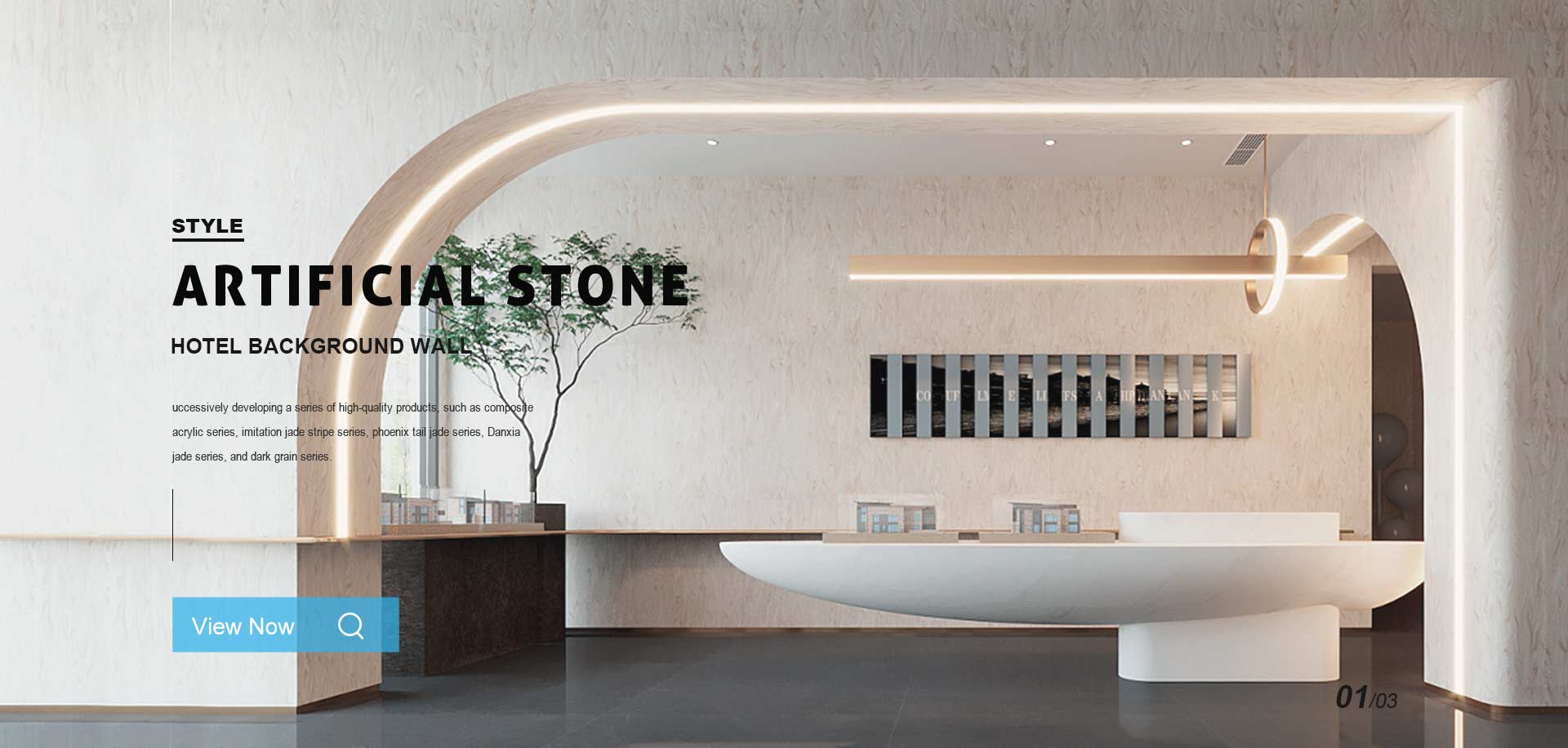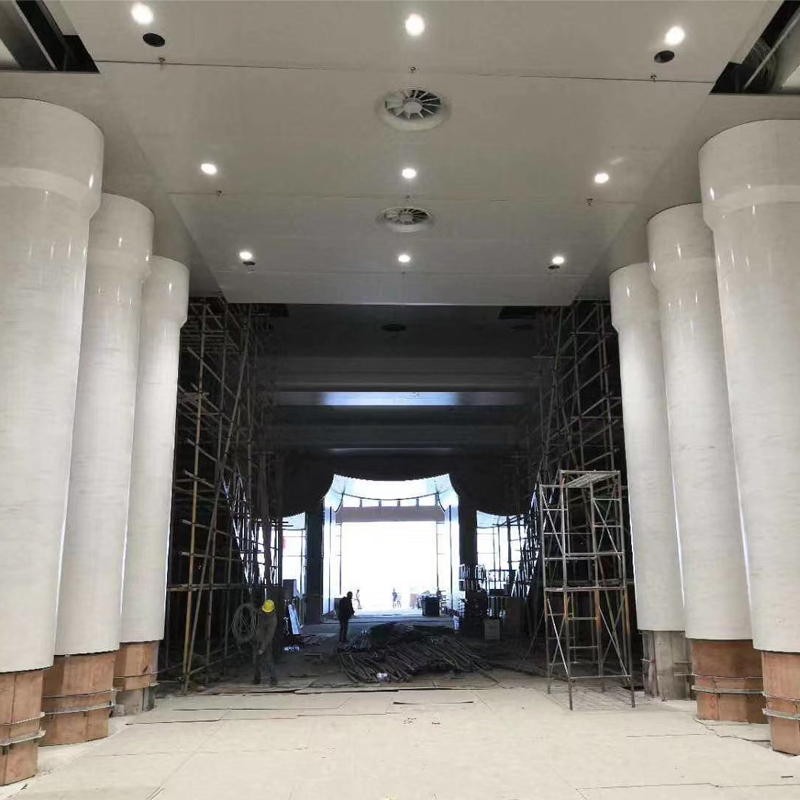
Artificial Stone Clad Columns are architectural elements that combine structural support with aesthetic appeal through the application of manufactured stone veneers. These columns typically consist of a load-bearing core (often made of steel, concrete, or wood) wrapped with high-density polyurethane, fiberglass-reinforced concrete (FRC), or cultured stone panels that mimic natural stone textures. The Artificial Stone cladding ranges from 5mm to 30mm in thickness, offering a lightweight alternative to solid stone while maintaining impressive compressive strength of ≥50 MPa for FRC varieties. Modern manufacturing techniques achieve remarkable realism, with color consistency maintained within ΔE ≤ 3.0 (CIELAB color difference) across production batches.
Key technical specifications include:
Water absorption rate: <5% by weight (ASTM C97)
Freeze-thaw resistance: ≥100 cycles without structural failure (ASTM C666)
Flame spread rating: Class A (0-25) for most polymer-based systems (ASTM E84)
Thermal expansion coefficient: 8-12 × 10⁻⁶/°C, similar to natural stone

The advanced composites used in Artificial Stone cladding typically contain 60-85% mineral aggregates (quartz, granite chips, or limestone) bound with 10-25% polymer resins (polyester, epoxy, or acrylic). High-end formulations may include UV-inhibiting additives that maintain color stability for 15-25 years under direct sunlight (ASTM G154 testing). The surface hardness reaches Mohs 5-7, comparable to medium-grade natural stone.
When properly installed over structural cores, clad columns demonstrate exceptional load-bearing capacity. Steel-core systems with 150mm diameter can support axial loads up to 1,200 kN, while maintaining a weight advantage of 40-60% lighter than solid stone equivalents. The cladding's flexural strength typically ranges from 7-15 MPa (ASTM C880), with impact resistance of ≥1.5 Joules (ASTM C647).
Accelerated weathering tests (ISO 11507) show minimal ΔE ≤ 2.0 color shift after 3,000 hours of UV exposure. The materials demonstrate excellent resistance to:
Salt spray: No corrosion after 1,000 hours (ASTM B117)
Chemical attack: pH 2-12 resistance for most acids and alkalis
Biological growth: ASTM G21 Rating 0 (no fungal growth)
Premium office lobbies frequently employ 400-600mm diameter columns with honed limestone-effect cladding, achieving LEED points for recycled content (often containing 30-70% post-industrial materials). Shopping centers utilize curved clad columns with ±2mm dimensional tolerance for seamless radius transitions.
High-end homes specify thermally broken systems that reduce thermal bridging by 60-80% compared to solid masonry. Popular applications include:
Portico columns with 20-30mm thick granite-effect panels
Interior fluted columns featuring 0.5-1.5mm precision-molded surface textures
Poolside columns with anti-slip (R10-R13) finishes
Polymer-modified stone cladding replicates heritage profiles with ±0.8mm accuracy using 3D scanning technology. These lightweight (12-18 kg/m²) systems allow seismic retrofitting without overloading original structures.
Permeable clad column systems incorporate 15-25% open voids for vertical garden integration, with compressive strengths maintained at ≥35 MPa even with bio-receptive surface treatments.
For optimal preservation, implement quarterly cleaning using:
pH-neutral (7.0±0.5) cleaners diluted to 5-10% concentration
Soft-bristle brushes with ≤100 psi pressure washing
Microfiber cloths for polished finishes (avoiding >100 μm abrasives)
Address discoloration within 24-48 hours using specialized treatments:
Organic stains: 12% hydrogen peroxide poultice (max 30 minutes contact)
Metallic stains: Chelating agents (EDTA-based, pH 8-9)
Graffiti: Dimethyl sulfoxide (DMSO) solvents with ≤5% VOC
Apply penetrating sealers every 3-5 years:
Silane/siloxane hybrids providing 95% water repellency (ASTM D6489)
Photocatalytic TiO₂ coatings for 80% NOx reduction (ISO 22197-1)
Anti-graffiti films with ≥20 cleaning cycles durability
Biannual inspections should verify:
Anchorage integrity (check for >0.5mm movement at connections)
Substrate corrosion (using ≤100 μA/cm² polarization resistance)
Joint sealant condition (replacing at ≥25% compression set)
For localized damage:
Hairline cracks (<0.3mm): Inject low-viscosity (300-500 cPs) epoxy
Spalled areas: Apply polymer-modified repair mortars with ≥28 MPa bond strength
Color matching: Use spectrophotometers (ΔE ≤1.5) for patch repairs